We all know that a lawn naturally faces the most challenging time in the winter. In many places, sunshine doesn’t appear for a long time, making the lawn prehensile to many different lawn diseases. Don’t you know how to get back your lawn’s previous condition? Following a set of effective spring lawn care tips is the most effective way to revive your lawn from winter damage.
It is for sure that you have no opportunity to hinder your lawn from facing the harshness of winter. But if you manage to take proper care when winter is over, it may help. On another side, the weather in Spring is different from most other seasons. Indeed, the temperature of the environment changes suddenly at this time. So, your lawn needs extra care in Spring.
Well, if you are concerned about your lawn’s condition in both Spring and winter, you are in the right place. Today, we will talk about the most effective spring lawn care tips that are proven to work after testing on many lawns. So, make sure to check the list of tips and follow them in the Spring.
Essential Spring Lawn Care Tips You Shouldn’t Miss
 Every lawn owner will acknowledge that Spring is the most sensitive time for the lawn as the harshness of winter is gone for a while. So, your lawn maintenance schedule in Spring will determine how quickly your lawn gets over from the winter damage. That’s why properly taking care of your lawn is essential, especially in Spring.
Every lawn owner will acknowledge that Spring is the most sensitive time for the lawn as the harshness of winter is gone for a while. So, your lawn maintenance schedule in Spring will determine how quickly your lawn gets over from the winter damage. That’s why properly taking care of your lawn is essential, especially in Spring.
Here, we have tried to list the 10 most effective spring lawn care tips that are essential for springtime and post-winter care. You should try to follow all of them if winter hits your place most severely. The suggested tips would help your lawn stay well even if it was too cold in the winter.
1. Service the Mower in the Spring
 Before using the lawn mower, everyone should check its operational condition and the sharpness of the blades. A rusty and dull mower cannot do any good. Moreover, it will damage the grass, which is certainly a bad thing in the Spring.
Before using the lawn mower, everyone should check its operational condition and the sharpness of the blades. A rusty and dull mower cannot do any good. Moreover, it will damage the grass, which is certainly a bad thing in the Spring.
As in the winter lawn almost remains free of any mowing, and the mower sits idle for a long time. Commonly, the blades would be dull and rusty. The motor and other mechanisms might need a cleaning and a bit of oiling.
So in the first mowing after winter, let the mower run alone for a bit. Then after checking the blade condition, turn the mower into the power mode and cut a limited height of the grass as a test.
After the test session, you are ready for full-blown mowing, but cutting the grass under one-third of the length in one session is suggested. This helps the regeneration and decreases the chance of possible damage to the grass, roots, and soil. So, check the mower and lawn condition first, then cut down the grass level as required.
2. Gently Rake the Lawn Frequently
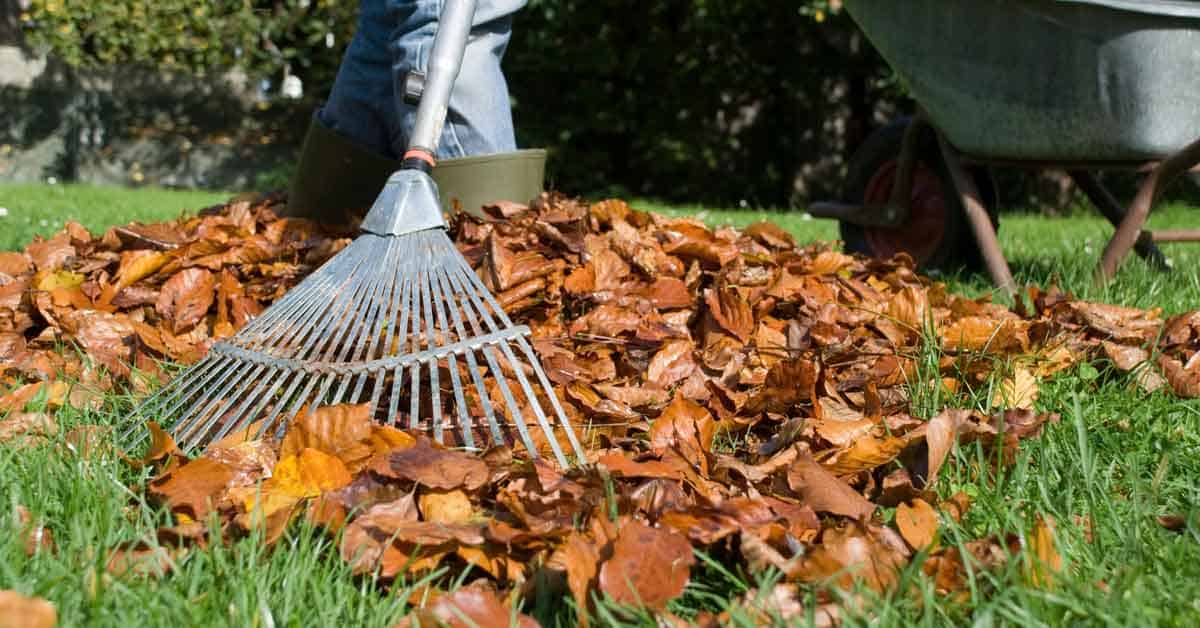 Raking is another great way to boost your lawn’s condition in Spring. There are many reasons for this, most of them based on the harsh winter effect and post-deterioration. Cleaning up the lawn area and removing the plants and debris as soon as possible is a must.
Raking is another great way to boost your lawn’s condition in Spring. There are many reasons for this, most of them based on the harsh winter effect and post-deterioration. Cleaning up the lawn area and removing the plants and debris as soon as possible is a must.
This process will also add some breathing room for the grass and soil. It means the air circulation improves greatly. Raking also prepares the lawn turf ready for fertilization. It is a must-do after the winter season for the optimal growth of lawn grasses. Keep in mind that the raking work should be done with a gentle hand. And it is one of the most effective spring lawn care tips you can even get.
3. Aeration
After a long and unforgiving winter, Spring is the time for the rejuvenation of the lawn. At the beginning of the spring season, all lawn owners must aerate their lawn area. This is an easy job and requires a basic garden tool called a garden fork. If you don’t have one, you can try a similar tool with fork-like pointy ends.
Aeration helps the grassroots to breathe easily. It makes a clean and clear air ventilation system in the soil. Moreover, aeration in the late winter or immediate Spring elevates the springtime fertilization exponentially. It will also save you from excessive fertilizer use, wastage of water, and other resources.
4. Revive the Bald Patches
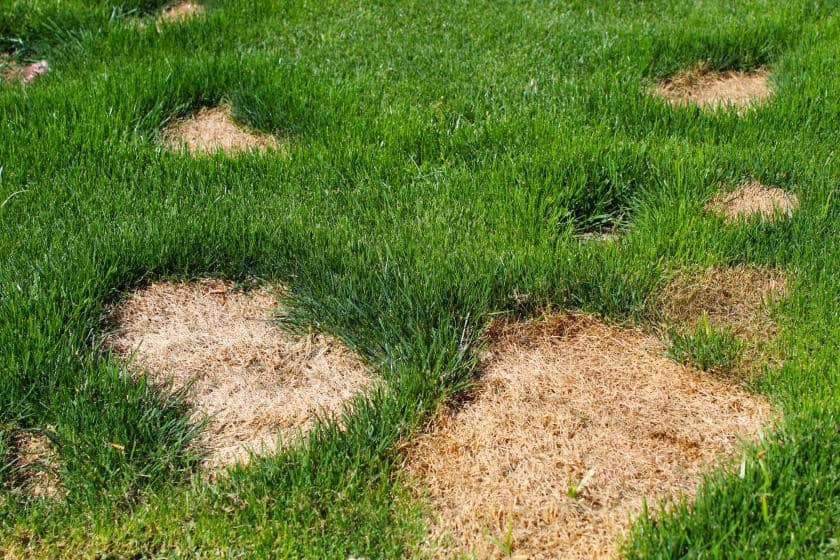 In Spring, one of the most important things is reviving the bald patches on the lawn. This is a Pro-tip for spring lawn care after the winter season. Don’t think that bald patches will go away on their own. It would but surely take much more time than the usual situation. So, additional nourishment and care are needed.
In Spring, one of the most important things is reviving the bald patches on the lawn. This is a Pro-tip for spring lawn care after the winter season. Don’t think that bald patches will go away on their own. It would but surely take much more time than the usual situation. So, additional nourishment and care are needed.
It is very easy to fix and requires very little work, yet bald patches might get spread if skipped. The best way is to add more grass seeds to the bald area after giving a quick rake and losing up the soil a bit. Additionally, a bit of nitrogen-enriched Fertilizer is recommended.
Try adding seeds of the same type or grasses on the bald patches. It will grow more quickly and clear up the odd look. The quickest way is to get a new turf and replace that on the bald site. Both are easy, so don’t skip them in the spring season.
5. Overseed the Entire Lawn
Not just for the bald patches, you should reseed the entire lawn for another reason. Basically, the snow layer on the lawn and the inadequate sunshine destroy the thickness of your lawn. So, you should overseed the lawn to get back its previous thickness.
Here, you have to use sufficient seeds. Remember that the amount of seeds is not the same for a new lawn and an older lawn to overseed. So, you should know how many sacks of seeds are needed for your lawn. You can skip this part if the grass’s thickness is all right.
6. Edge Shaping
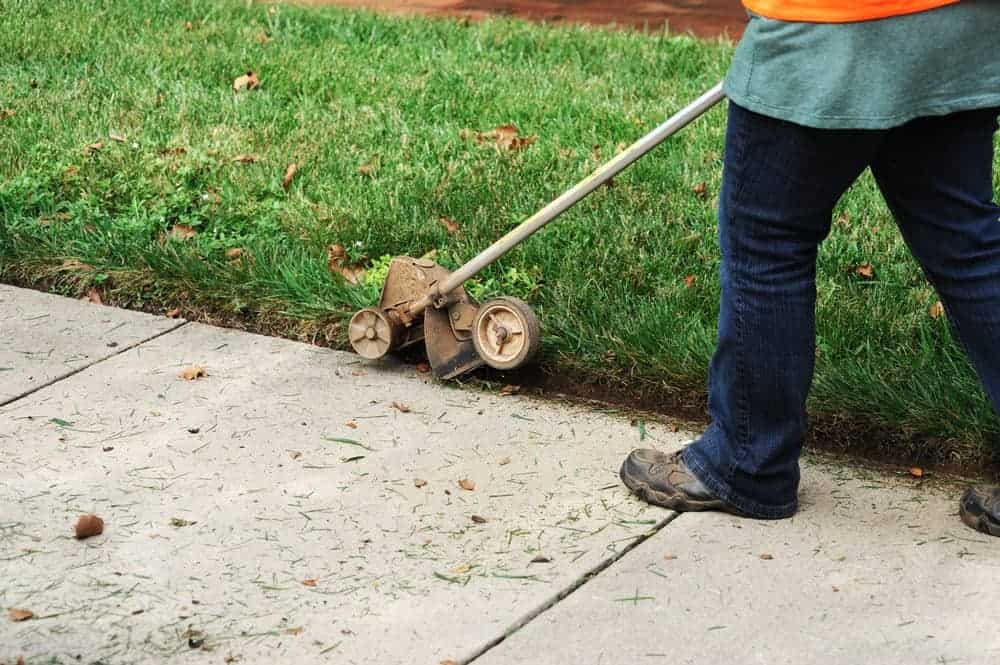 Your lawn could get messy with time, especially after a cold winter period. Even after mowing, the edges of the lawn get irregular shapes which look bad. So, it is a must to clean up the overgrown sides of the turfs. An iron or steel-made edging tool is all you need to do this job. It is a very common lawn maintenance tool. You should get one from the stores if you don’t have one.
Your lawn could get messy with time, especially after a cold winter period. Even after mowing, the edges of the lawn get irregular shapes which look bad. So, it is a must to clean up the overgrown sides of the turfs. An iron or steel-made edging tool is all you need to do this job. It is a very common lawn maintenance tool. You should get one from the stores if you don’t have one.
If you are new to this, you can ask for an expert’s help. Once someone guides you for the first time, you won’t need anyone else again. So, don’t forget to clean up and give your lawn a smart look by giving the edges and tricky corners a good trim. This will also boost the overall drainage system of the lawn turf.
7. Adequate Watering
 You surely don’t want your lawn turf to get dried up and burned. Yes, if you don’t provide the necessary water on your lawn in Spring, it will dry up and die slowly. So, we recommend watering the whole lawn turf at least twice a week. If you forget about watering, you can install a sprinkler system with an automatic hose timer.
You surely don’t want your lawn turf to get dried up and burned. Yes, if you don’t provide the necessary water on your lawn in Spring, it will dry up and die slowly. So, we recommend watering the whole lawn turf at least twice a week. If you forget about watering, you can install a sprinkler system with an automatic hose timer.
Another thing, if the weather is cool, you don’t have to water twice a week. Too much water can detriment the overall health condition of the lawn grasses. Finally, checking the weather condition is a must when it comes to watering the lawn turf in the spring season.
8. Turf Nourishment
This is a crucial one in the springtime lawn turf care regimen. It is about fertilization and soil nourishment. After the winter, all lawn owners must clean up their lawn turf from unwanted debris and weeds. Here, fertilizers can help if provided with the appropriate ones.
To get the best results, lawn owners should know about their grass types and soil condition. This depends on the lawn’s health condition; if there is much damage, not just fertilizers will do the magic; some additional grass seeds might be required.
I would suggest at least 25 to 40 grams of proper nitrogen-enriched fertilizers per square meter for optimal outcomes. Moreover, you can also keep the grass clippings on the lawn turf after the quick trim. Doing this can save up on some fertilizers and additional costs.
9. Remove Thatch
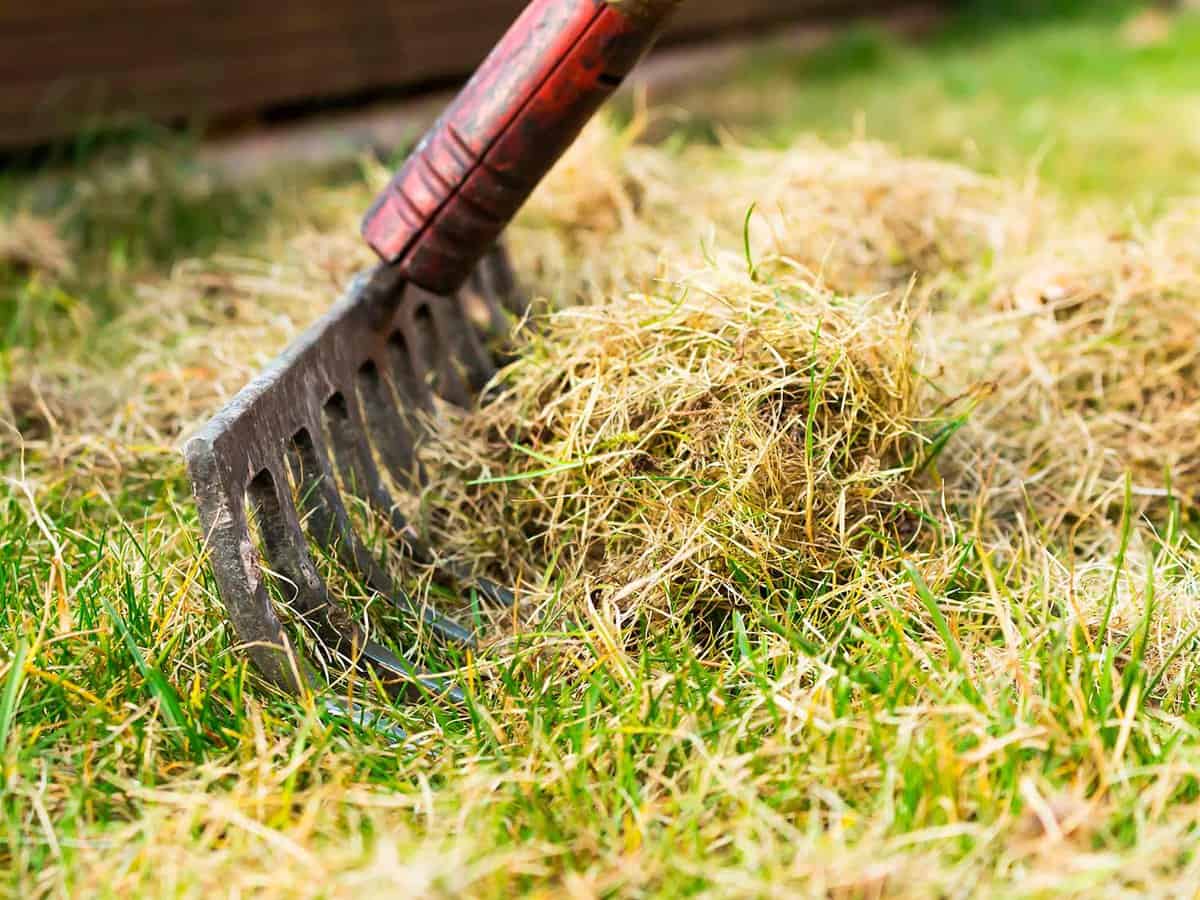 Next, you have to remove excessive Thatch. Basically, Thatch is the stored dry grass that makes a layer under the grass. In winter, your lawn produces more Thatch, which can cause future problems. The thatch layer is, for sure, good for your lawn, but excessive Thatch is not good at all.
Next, you have to remove excessive Thatch. Basically, Thatch is the stored dry grass that makes a layer under the grass. In winter, your lawn produces more Thatch, which can cause future problems. The thatch layer is, for sure, good for your lawn, but excessive Thatch is not good at all.
So, when it is Spring, you should at least check the Thatch and remove the layer if it is too thicker. You can use a dethatcher if you have a larger lawn. But if it is a small-size lawn, you can use a garden fork rake to remove the Thatch.
10. Test the Soil to Choose the Right Fertilizer
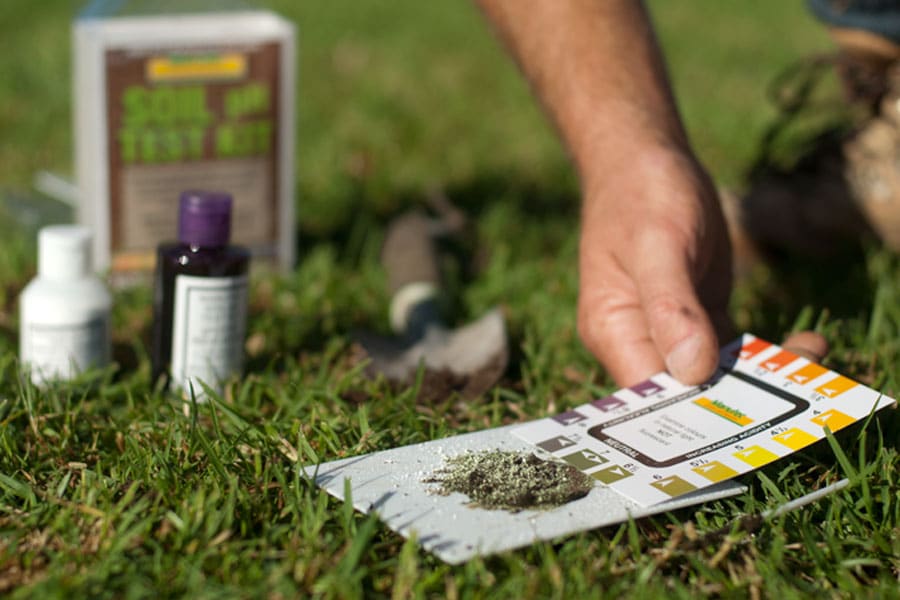 Finally, you should test the soil in the Spring. The condition of the soil can be changed in the winter. The pH level can change as well. Also, the essential nutrients can simply reduce or increase due to the excessively cold temperature in winter. So, you should determine what your lawn soil wants this Spring.
Finally, you should test the soil in the Spring. The condition of the soil can be changed in the winter. The pH level can change as well. Also, the essential nutrients can simply reduce or increase due to the excessively cold temperature in winter. So, you should determine what your lawn soil wants this Spring.
For that, testing the soil is the best way. Eventually, professionals suggest making a habit of testing the soil in Spring. It will help you choose the right Fertilizer and nutrients for the lawn. However, if you cannot go for a lab test, you can try the DIY lawn soil pH test at home.
So, these are the basic spring lawn care tips that every lawn owner should follow. Remember that Spring is quite a hard time for your lawn as it has to revive from the winter harshness at this time. So, you must ensure that your lawn gets sufficient nutrients, water, and care to return to its previous condition.
FAQ
Q: What is the best lawn fertilizer to use in Spring?
A: A lawn fertilizer with approximately 16-4-8 NPK rate is ideal for applying to the lawn in Spring. That means a fertilizer that is rich in nitrogen and low in phosphorus is good to use in Spring. But we suggest you test the soil to learn about what your soil needs. Indeed, every lawn owner should test the lawn soil in Spring to choose the right Fertilizer.
Q: Is Spring good to sow seeds?
A: Yes, Spring is indeed the best time to sow seeds on a new lawn or overseed an old lawn. At this time, the weather is neither too cold nor hot. So, the seeds get the appropriate temperature to germinate. In this case, you should sow seeds in the early Spring.
Q: Should I apply the Spring fertilizer?
A: You should apply the spring lawn fertilizer in the later Spring. That means you should use it in late May or early June. If you fertilize your lawn at this time, it will be able to prepare for the summer growth. Also, the damage caused in winter can be easily treated with spring fertilizer.
Q: Should I use any herbicides on the lawn in Spring?
A: If your lawn shows symptoms of weeds and infectious diseases in Spring, you should use herbicides to treat it. Using pre-emergents is the best way to treat your lawn in Spring. You can use it to kill spring weeds and many different fungal diseases.
Q: Is it necessary to rake the grass in Spring?
A: In Spring, raking the grass lawn is a must-try. We know that Spring means fallen leaves, so your lawn may have a layer of leaves if you don’t rake it regularly. Also, it can build up excessive Thatch if you skip raking the lawn frequently. So, you should rake the lawn regularly in Spring to keep it green and clean.
Final Verdict
Spring may bring more flowers and a sweet wind to nature, but it’s not that much sweeter for your lawn. Your lawn faces a hard time in winter; if you don’t treat your lawn perfectly in the Spring, it may not survive. However, we have tried to collect and share the most effective Spring lawn care tips and hope you’ll follow them.
But we suggest not to follow them blindly. Suppose your lawn doesn’t produce any thatch in winter. In this case, you don’t have to dethatch it anyway. So, try to examine the situation of the lawn properly and determine which task it needs you to do.
So, here, we are taking out leave. We will soon come up with another content regarding your lawn and its care. Tell us about your lawn and how you take care of it in Spring. We love to learn from you as well. Thanks for your time.
